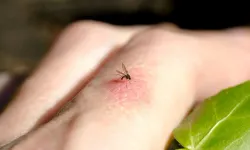Scientists at the University of California, USA, studied 53 adult British Shorthair cats from August 2021 to June 2022.
Using the "Facial Movement Coding System" developed for cats, the researchers analyzed the "facial signals" produced when the cats interacted with each other, looking at the number and types of facial muscle movements.
The researchers recorded 186 interactions between cats and coded a total of 688 facial signals produced by 413 male and 275 female cats.
Analyzing these signals, the researchers discovered that the cats used 276 different facial expressions when interacting with each other.
Although they could not assign a meaning to every expression they recorded, the researchers found that 45.7 percent of the coded expressions were friendly, while 37 percent were aggressive.
Cats with ears and whiskers moved forward and eyes closed were friendly, while cats with constricted pupils and ears flattened against their head were aggressive, the researchers said.
Muscle movements associated with biological processes such as breathing and yawning were not included in the study.
"Domestication had a significant impact on the development of cats' facial signals"
"Our study shows that feline communication is more complex than previously assumed," Brittany Florkiewicz, one of the study's authors, said in an interview with CNN.
Florkiewicz noted that domestication had a significant impact on the development of cats' facial signals.
Researcher Florkiewicz noted that cats are more socially tolerant because they live in close proximity to humans, so they have more facial expressions, but they were surprised when they detected 267 facial expressions.
The results of the study were published in the journal Behavioral Processes.
Cats discovered to have 276 different facial expressions
Scientists in the US have found that cats use 276 different facial expressions when interacting with each other.
Editor: John Wickey
Comments
Trending news

Monkeypox Virus: Rising Case Numbers and Increased Risk for Children

Aaron Rodgers’ Comeback Takes a Nosedive as He’s Forced Out of First Game Back with New York Jets

Poll Unveils Independent Voters' Reactions to Trump and Harris Following Recent Debate

Swing State Voters Make a Surprising Call: Focus Group's Debate Top Pick Signals a Game-Changer for 2024

Russell Wilson Benched: The Broncos' New Game Plan is Clearly Self-Destruction
Terrifying details in the death of the Swiss woman: She dismembered and mashed the body









